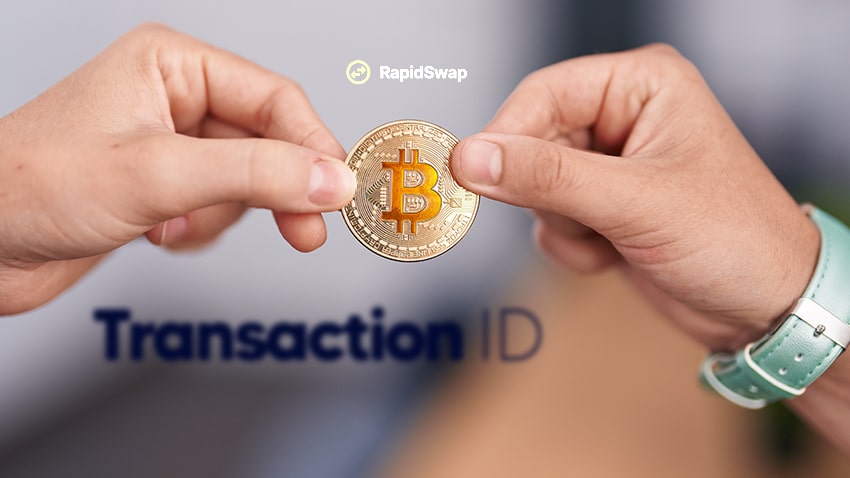Navigating the world of cryptocurrency and digital payments can be complex, especially when it comes to tracking and verifying transactions. One critical element in this process is the Transaction ID (TXID). This unique identifier plays a crucial role in managing, verifying, and troubleshooting transactions across various platforms, including cryptocurrencies like Bitcoin and payment systems like PayPal and Google Pay. This article will explore what a Transaction ID is, its significance in different contexts, and how you can use it to ensure your transactions are secure and trackable.
What Is a Transaction ID?
A Transaction ID (TXID) is a distinctive alphanumeric code assigned to each transaction carried out on a blockchain or digital payment platform. This identifier is generated when a transaction is initiated and serves as a unique reference point, enabling users and systems to track and verify the specific transaction. While the format of a Transaction ID can vary depending on the platform or system used, it typically consists of a string of random letters and numbers. This ID is crucial for various purposes, including confirming transaction details, resolving disputes, and ensuring the successful transfer of funds.
Why You Need to Know Your Transaction ID
Understanding and accessing your Transaction ID can be essential in several scenarios. Here are some common situations where knowing your Transaction ID can be beneficial:
- Tracking Transactions: Whether you’re dealing with cryptocurrency or fiat money, being able to quickly look up the status of a transaction can provide peace of mind. The Transaction ID allows you to monitor the progress of your transfer, ensuring that it has been successfully processed and confirmed.
- Requesting Refunds: In cases where a transaction needs to be reversed or refunded, the Transaction ID acts as a critical reference. By providing this ID to the payment processor or service provider, you can expedite the resolution process.
- Customer Support Inquiries: If you encounter issues with a payment or need to verify a transaction, customer support will often require the Transaction ID to assist you. This ID helps support teams quickly locate the transaction in question and provide the necessary assistance.
- Tracking Crypto Funds: For cryptocurrency users, the Transaction ID is particularly important. It allows you to trace the movement of your assets on the blockchain, confirming that your funds have reached the intended destination.
Bitcoin Transaction IDs
In the realm of cryptocurrencies, each transaction is recorded on the blockchain, a decentralized ledger that ensures transparency and security. Every Bitcoin transaction, for example, is assigned a unique Transaction ID, also known as a transaction hash. This ID enables users to locate and verify their specific transaction on the blockchain. A Bitcoin Transaction ID not only shows the transaction amount and status but also provides details such as the sender’s and receiver’s crypto addresses. Despite the detailed information available through a Transaction ID, it does not reveal personal information, maintaining the privacy of the users involved.
Example of a Bitcoin Transaction ID:
Consider the famous Bitcoin transaction where Laszlo Hanyecz purchased two pizzas for 10,000 BTC in May 2010. The Transaction ID for this purchase is: a1075db55d416d3ca199f55b6084e2115b9345e16c5cf302fc80e9d5fbf5d48d
Using this ID in a block explorer allows anyone to view the details of this historic transaction without compromising the privacy of the individuals involved.
PayPal and Google Pay Transaction IDs
As digital payment platforms evolve to incorporate cryptocurrency, understanding Transaction IDs in systems like PayPal and Google Pay becomes increasingly important. Both of these platforms generate unique Transaction IDs for every transaction, whether it involves crypto or fiat currency.
- PayPal Transaction IDs: PayPal assigns a 17-character alphanumeric code to each transaction. This ID can be found in the “Activity” section of your PayPal account, providing a simple way to track payments or resolve any issues.
- Google Pay Transaction IDs: Similar to PayPal, Google Pay also issues a unique Transaction ID for every payment. Users can locate these IDs by visiting the “Activity” tab on the Google Pay website and selecting the relevant transaction.
Distinguishing Between Purchase IDs and Transaction IDs
It’s important to note that a Transaction ID is different from a Purchase ID. While a Purchase ID refers to the specific identifier of a payment within a system, a Transaction ID represents the actual transfer of funds. In some cases, a Purchase ID might not have an associated Transaction ID, especially if the payment involves non-monetary transactions, such as the use of loyalty points.
How to Retrieve a Transaction ID
If you’ve misplaced your Transaction ID, there are several ways to retrieve it:
- Crypto Wallets: Most cryptocurrency wallets automatically record transaction details, including the Transaction ID. You can usually find this information in your transaction history.
- Email Confirmation: Payment platforms often send an email confirmation with the Transaction ID included. Searching your inbox for transaction-related emails can help you locate the ID.
- Platform Accounts: If you’ve created an account on a cryptocurrency exchange or marketplace, your transaction history may be accessible through your account dashboard, where the Transaction ID will be listed.
- Block Explorers: For crypto transactions, you can use a block explorer to search for your Transaction ID by entering details such as your public address, the date of the transaction, or the transaction amount. This method is particularly useful if you’re having trouble finding the ID through other means.
Understanding what a Transaction ID is and how to use it is essential for anyone involved in digital payments, especially in the cryptocurrency space. This unique identifier not only helps track and verify transactions but also plays a crucial role in resolving issues and ensuring the security of your funds. Whether you’re using Bitcoin, PayPal, Google Pay, or any other digital payment platform, knowing how to locate and utilize your Transaction ID will enhance your ability to manage and safeguard your transactions.

